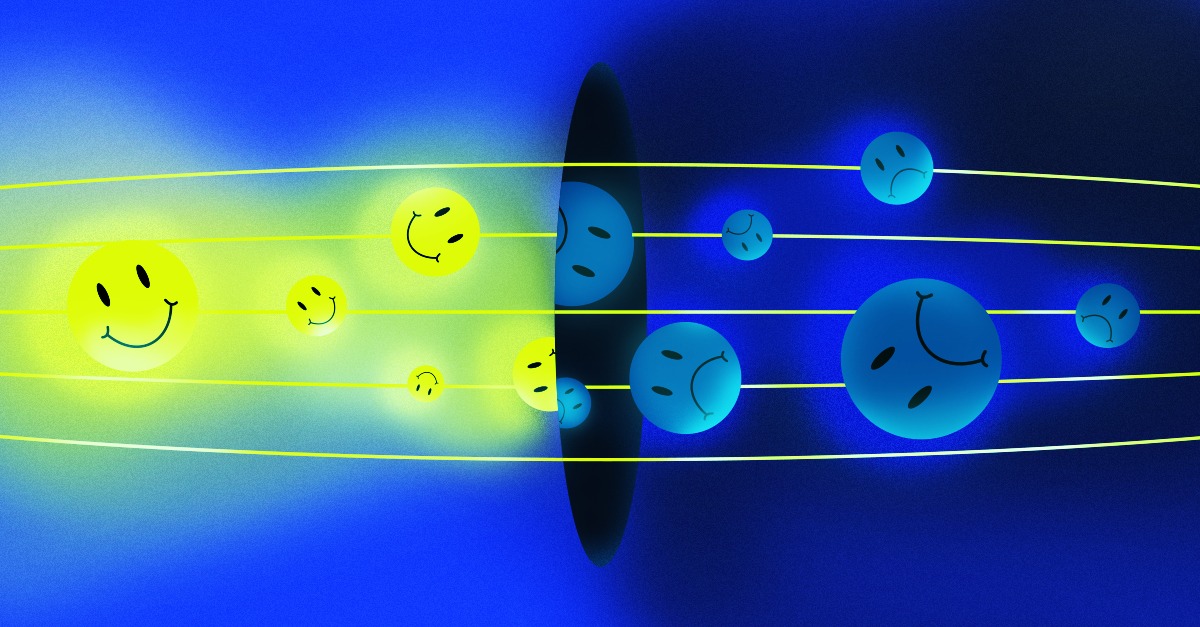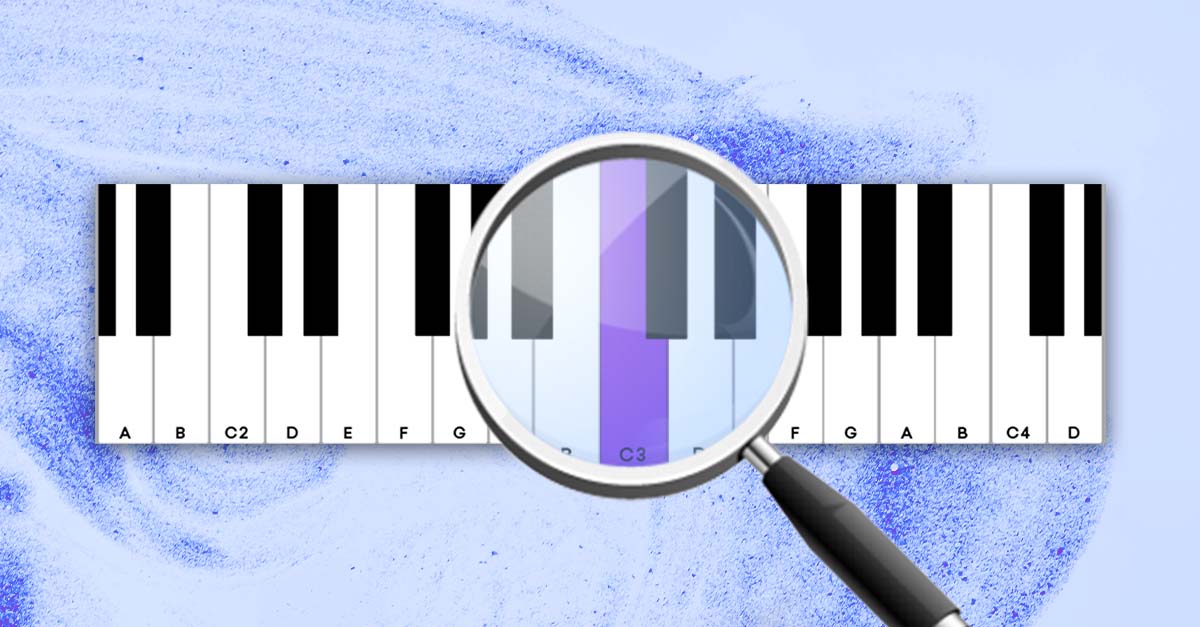Minor Scales: How to Make Sad Music

The major and minor scales are the basis for any melody in western music. These foundational patterns have strong links to basic emotions for most listeners.
Major scales are normally associated with happiness, while minor scales typically evoke feelings of sadness and melancholy.
The somber mood of minor scales has a powerful effect on listeners. You need to learn how to use them if you want to access the distinctive atmosphere the minor tonality creates.
But the minor mode is more complicated than its happier counterpart. There are several different versions and finding the key signature takes a bit more work.
In this article I’ll explain everything you need to know about the minor scale and how to use it in your music.
Theory guides, production tips, new free plugins, gear guides and more—delivered weekly
Keep up with the LANDR Blog.
What is the minor scale?
The minor scale is the pattern in western music typically associated with sad feelings. It includes three different variations called the natural minor scale (or Aeolian mode), the melodic minor scale and the harmonic minor scale. Each has a slightly different use, but all three scales include the distinctive minor third relationship to the tonic in scale degree 3.
That might sound complicated, but don’t worry. I’ll go through each variation on the minor scale and explain where it comes from and how it’s used.
Natural minor scale
Natural minor is the simplest form of minor scale.
It’s based on the following tone-semitone pattern: Tone-semitone-tone-tone-semitone-tone-tone. The pattern can be shown by writing the degrees of the scale that are altered from the major scale
It’s called natural minor because it’s equivalent to the relative minor key signature in a major key without any changes to the pattern.
Each major key shares its key signature with a related minor scale called the relative minor.
Each major key shares its key signature with a related minor scale called the relative minor.
The relative minor is the 7 note scale beginning and ending on the 6th degree of any major scale.
For example, the relative minor of C Major is A minor. It shares the same key signature with no sharps and flats.
Playing the notes in this key signature in order will give you the A natural minor scale.
This relationship is also the reason why natural minor is sometimes called the Aeolian mode.
It follows the pattern of generating the church modes from each degree of the major scale—but that’s a topic for another article!

Harmonic minor scale
Natural minor has a great melancholic sound, but there’s an issue with using it in harmonic progressions. It doesn’t contain a leading tone.
In major, the semitone intervals between the third and fourth and seventh and tonic of the scale are what give the dominant 7th chord its harmonic power.
These tones naturally want to resolve up or down to a tonic chord to release tension in a musical phrase.
However, if you build a four note chord on the fifth degree of the natural minor scale you won’t get a dominant seventh chord.
To do so you’ll need to raise the seventh degree of the natural minor scale by a semitone.
The resulting scale is called harmonic minor because it contains the essential ingredients for V7 in minor—the key to functional harmony.
Harmonic minor has the tone-semitone pattern: tone-semitone-tone-tone-semitone-

Melodic minor scale
Harmonic minor takes care of the harmonic issues with the natural minor scale but it presents its own unique problem.
In harmonic minor, the interval between the sixth and seventh degree of the scale is 1.5 semitones. This is to accommodate the raised leading tone for the dominant seventh chord.
Unfortunately, this augmented second step can be a little awkward for melodies or voice leading.
Melodic minor solves that issue in a unique way.
In melodic minor the sixth and seventh steps of the scale are raised when a phrase is ascending.
In melodic minor, the sixth and seventh steps of the scale are raised when a phrase is ascending.
If a line is descending, the seventh degree is lowered as in natural minor.
This scheme preserves smooth melodic transition between notes, without awkward skips.
Here’s the alterations found in the A minor melodic scale:
Ascending:
Descending:
Hot tip: In jazz, melodic minor always includes the raised sixth and seventh degree—ascending and descending.
Minor modes
There are several modes that share the characteristic minor 3rd scale degree that are worth mentioning when it comes to sorrowful and melancholic sounds.
I’ve already covered the Aeolian mode in the section about the natural minor scale, but it’s worth reiterating that this simpler minor tonality can be an interesting melodic and harmonic center in your songs.
The minor V chord that results from building a chord on the fifth degree of the Aeolian mode is often used in rock and pop:
The melodic minor scale is also closely related to the Dorian mode with its raised sixth degree. Dorian is maybe even more common in pop music, with plenty of examples throughout music history.
Dorian is maybe even more common in pop music, with plenty of examples throughout music history.
Finally, the Phrygian mode also has the minor 3rd scale degree but sounds even darker and more brooding due to the lowered second scale degree.
There’s a lot to play with when it comes to minor sounds!
Modulating with Minor Scales
Another powerful tool in your music-making arsenal when it comes to minor scales is modulation—the act of changing keys within a composition.
By understanding and utilizing modulation, you can manipulate the emotional dynamics of your piece to a greater degree.
In traditional Western music theory, moving to a different key can bring about a dramatic change in mood.
Modulating to a minor key can often provide a poignant or introspective contrast to the brightness of a major key.
This can create a sense of narrative progression and emotional depth in your music.
Consider the case of modulating from a major key to its relative minor.
If you’re in C Major, for instance, you might modulate to A minor. This transition subtly shifts the mood without creating a jarring tonal clash, as these keys share the same notes but center around different tonics.

Knowing your circle of fifths can help with finding pleasing keys to modulate to.
But the potential for modulation with minor scales goes beyond just major-relative minor shifts.
Let’s say you’re writing a piece in A minor (the natural minor scale of C Major).
By raising the seventh note (G to G#), you get the harmonic minor scale. This change can introduce tension, setting up a strong resolution to the tonic, which is a common trick in many classical compositions.
Similarly, you can switch from natural minor to melodic minor while ascending a scale or a melody line to smooth out the melodic flow, creating a somewhat ‘brighter’ minor feel due to the raised sixth and seventh degrees.
It’s also worth exploring more exotic modulations.
For example, transitioning from a minor key to its parallel major (e.g., A minor to A Major) can create an uplifting, transformative effect, often used in the final section of a piece to provide resolution and a sense of triumph.
The real power of modulation lies in your creativity, so experiment with modulating to and from minor keys, and see what unique emotional landscapes you can create in your compositions.
Minor leagues
Writing music in minor is essential if you want to evoke sad emotions in your listeners.
Making music with minor scales may seem complicated, but if you know the function of each and where to use it, you won’t have any trouble.
Use this guide to minor scales to start exploring the darker, gloomier side of chords and scales.
Gear guides, tips, tutorials, inspiration and more—delivered weekly.
Keep up with the LANDR Blog.
Latest posts



